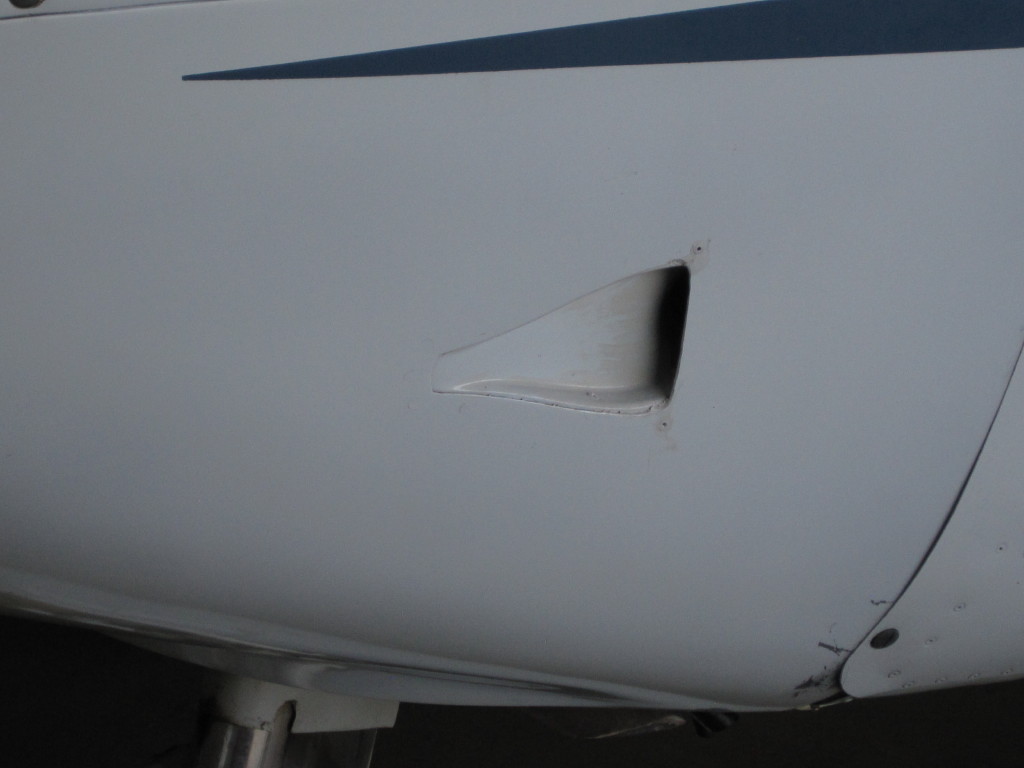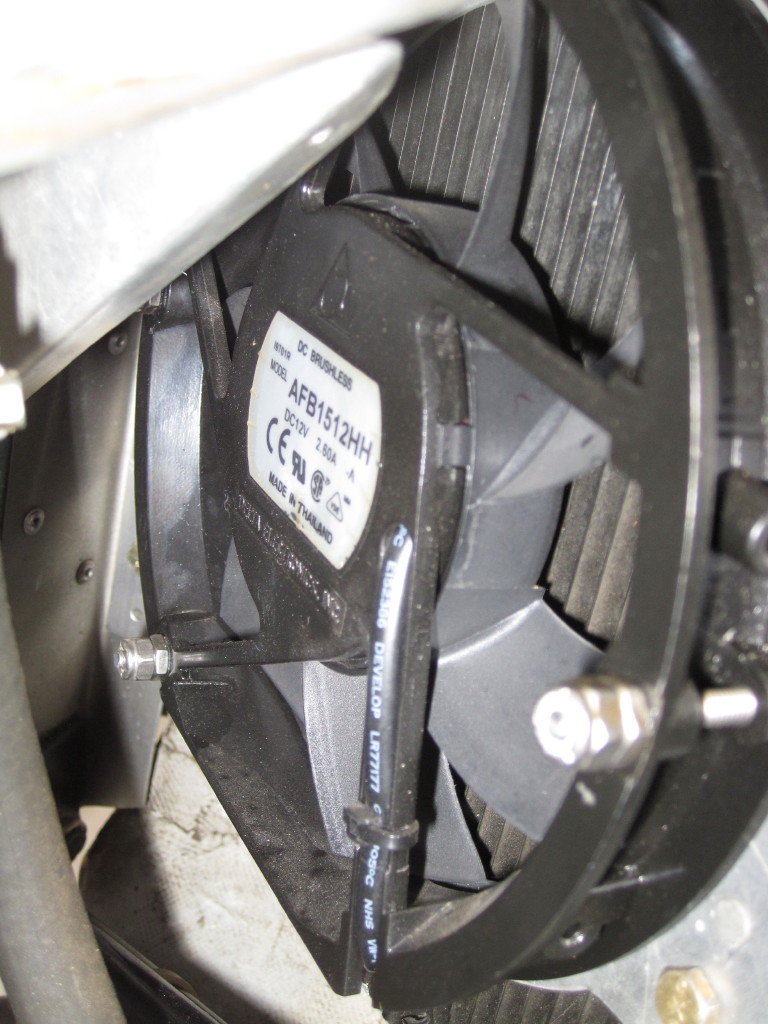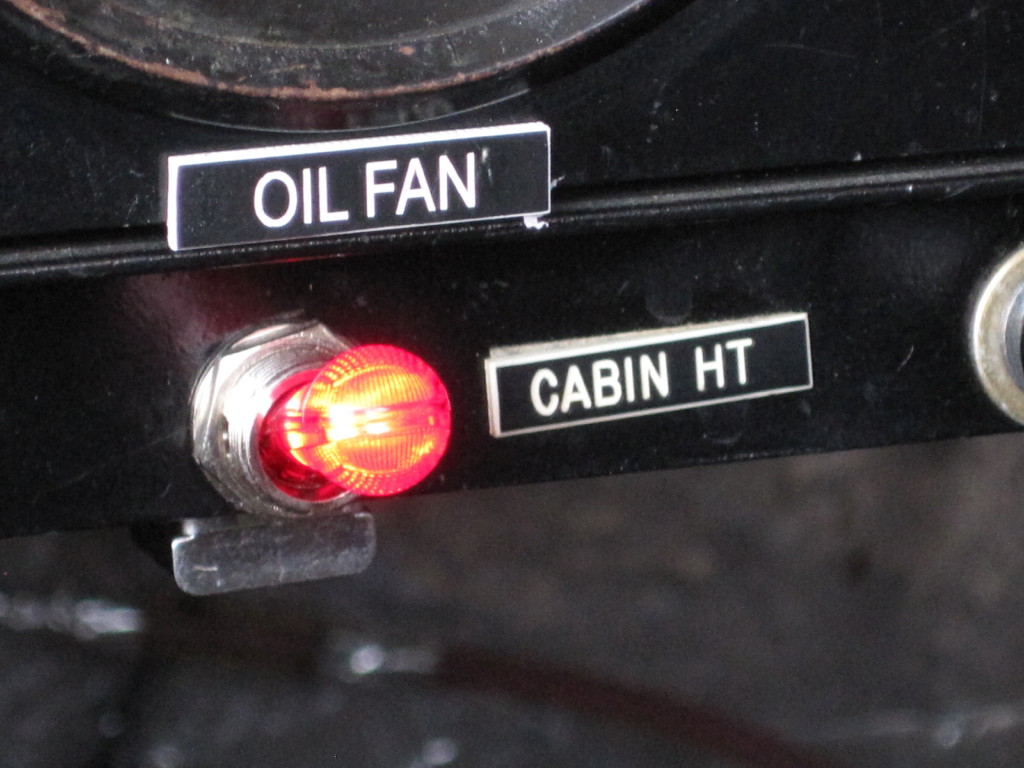Design Improvements for the Zenith 601 HDS:
Radiator
Oil Cooler
A 2in. NACA inlet supplies air to the oil cooler.

The amount of air supplied to the oil cooler suffices when
ambient air temperature is below 85 deg F.
For higher air temperatures, an electric fan has been installed
on the outlet set of the oil cooler.

The fan produces a high-volume air flow while drawing 2.5 A.
The fan has been tested for 1,000 hr
in 230 deg F air, and thus can be expected to be very reliable.
It is so effective that the oil temperature does not go above
the green 190-230 deg F range
even if ambient air temperature climbs past
100 deg F. Indeed, with the fan running,
the oil temperature rarely goes beyond 210 deg F.
This is a good thing, as argued in the article
Points for Pilots: Cool Oil is Cool.
A red switch with internal LED light, positioned just
below the instrument cluster, activates the fan.
When turned on, the lit switch reminds us
constantly to monitor the oil temperature.

The fan is also turned on during steep climb-outs,
since then the NACA inlet becomes ineffective due to the low speed and
the large angle between the NACA inlet axis and the direction of
air flow. This option allows climb-outs at 60 kts, the
speed for fastest rate of climb. This is important in high temperature environments where we want to reach cooler air as quickly as possible.
It is important that the fan does not windmill when power is turned
off, since a windmilling fan would impede airflow. We checked that
the fan does not windmill in normal flight
by measuring the voltage produced by
the fan in the off position. Except for airspeeds near red line,
that voltage is zero, proving that the fan does not windmill in normal
flight.